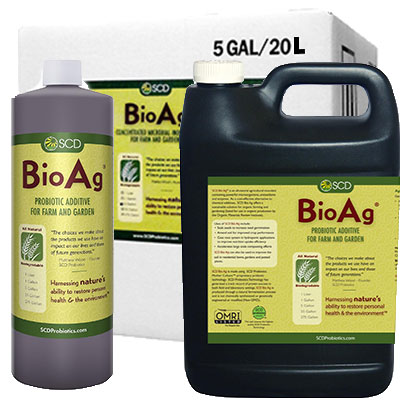Discover how soil activator and soil microbes support microbial growth, respiration, and carbon use efficiency, key processes for soil fertility and long-term farm productivity.
Why Soil Microbes Matter
Healthy soil is not just dirt; it is a living ecosystem powered by microbes. Bacteria, fungi, and other microscopic organisms break down organic matter, recycle nutrients, and support plant roots. Together, these soil microbes form the foundation of soil fertility.
Recent research highlights that microbial growth, respiration, and carbon use efficiency (CUE) are crucial for understanding how soil stores and cycles carbon across seasons. These processes determine whether soil acts as a carbon sink supporting plant growth or displacing carbon into the atmosphere through respiration.
This means that nurturing microbial life is directly tied to long-term soil productivity, resilience, and food security for small farmers and gardeners.

What Science Tells Us
A 2023 study in Geoderma examined how microbial communities regulate the soil carbon cycle. The findings emphasize that:
- Microbial growth drives nutrient availability for crops.
- Microbial respiration influences how soil releases or conserves carbon across seasonal shifts.
- Carbon use efficiency (CUE) reflects how well microbes convert organic matter into biomass instead of releasing it as CO₂.
These parameters are not just academic; they explain why soils rich in diverse microbes consistently produce healthier crops and adapt better to environmental stress.
The Role of Soil Activator and Soil Microbes
Soil activator products, such as natural microbial inoculants, can enhance soil function by adding diverse microbial communities. Unlike synthetic fertilizers that only provide nutrients, soil activators work with nature to improve microbial activity, nutrient cycling, and soil structure.
By strengthening microbial growth and boosting CUE, soil activators:
- Increase organic matter breakdown and nutrient release.
- Support better root development and plant resilience.
- Improve the soil’s ability to retain carbon and water.
When combined with organic practices like composting and crop rotation, soil activators help replicate the benefits observed in soils managed under sustainable farming systems.
What This Science Means for Farmers
The recent research underscores how soil microbes grow, breathe, and use carbon is central to soil fertility. For farmers, this means:
- Feed the microbes, not just the crops
Microbes thrive when soils have a steady supply of organic matter (compost, crop residues, cover crops). This supports microbial growth and improves nutrient availability to plants. - Balance soil disturbance
Excessive tillage increases microbial respiration, which can lead to rapid carbon loss as CO₂. Reducing tillage helps maintain soil carbon stocks and supports higher microbial carbon use efficiency. - Encourage microbial diversity
Different microbes perform different roles. Using soil activators, compost teas, or fermented microbial products helps introduce beneficial microbial groups that enhance nutrient cycling and resilience.
➡️ Farmers looking for a natural option can consider products like SCD Probiotics’ microbial blends, which add living communities of beneficial bacteria to the soil. - Think seasonally about soil health
Microbial respiration and CUE fluctuate with temperature and moisture. Practices like mulching, cover cropping, or timed organic inputs help buffer soils against seasonal stress and maintain microbial balance year-round. - Build resilience, not just yield.
High microbial carbon use efficiency (CUE) means more carbon is retained in microbial biomass rather than lost to the atmosphere. Over time, this builds soil organic matter, improving water retention, fertility, and farm resilience to drought or climate shifts.
Practical Steps for Small Farms
To maximize the benefits of soil activator and soil microbes, small-scale farmers and gardeners can:
- Regularly add compost or organic matter to feed microbial communities.
- Limit chemical pesticides and fertilizers that disrupt microbial balance.
- Use cover crops and crop rotation to maintain soil structure and fertility.
- Introduce soil activators like SCD Probiotics’ naturally fermented microbial products to boost microbial diversity and efficiency.
These practices create a soil environment where microbial growth and respiration are balanced, carbon is used efficiently, and plants can thrive season after season.
A Stronger Future Through Soil Microbes
For small farms and homesteads, investing in soil life is the key to lasting productivity. Science shows that soil microbial processes, growth, respiration, and carbon efficiency are central to sustaining soil fertility and resilience.

For small farms and homesteads, investing in soil life is the key to lasting productivity. Science shows that soil microbial processes, growth, respiration, and carbon efficiency are central to sustaining soil fertility and resilience.
By using soil activators alongside mindful farming practices, growers can support the natural microbial cycles that keep soils fertile, crops healthy, and farms more resilient to climate challenges.
Powerful tools, such as SCD Probiotics products, can help farmers enhance microbial diversity and strengthen soil systems, an investment in healthier soils today and more reliable harvests tomorrow.
When choosing a microbial inoculant, it’s important to consider your soil type, crop needs, and desired outcomes—such as improving nutrient cycling or boosting soil structure. To learn more, visit our guide on how to choose the right soil amendment.






